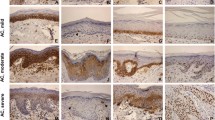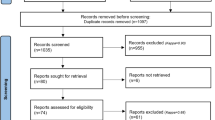Abstract
Data on the occurrence and clinicopathological characteristics of actinic cheilitis (AC) and lip squamous cell carcinoma (LSCC) are well studied; however, they are based on studies limited to a single centre. Herein, we described the frequency of AC and LSCC submitted to microscopic examination from representative geographic regions of Brazil. A retrospective multicentre study was performed on biopsies obtained from 1953 to 2018 at 10 Brazilian oral and maxillofacial pathology centres. A total of 198,709 biopsy specimens were surveyed. Sociodemographic data and clinicopathologic characteristics were analysed. A total of 2017 cases of ACs (1.0%) and 850 cases of LSCCs (0.4%) were recorded. A strong fair-skinned (> 87%) male (> 70%) predilection was observed in both conditions. The mean age was 54.8 ± 18.7 for individuals with AC and 57.8 ± 19.0 for individuals with LSCC. The most commonly affected site was the lower lip (> 90%). This is a large multicentre study of AC and LSCC from Brazil. The frequency and clinicopathological features of AC and LSCC were similar to those described worldwide. This study provides robust and representative epidemiological data of these conditions for the scientific community.



Similar content being viewed by others
References
Vieira RA, Minicucci EM, Marques ME, Marques SA. Actinic cheilitis and squamous cell carcinoma of the lip: clinical, histopathological and immunogenetic aspects. An Bras Dermatol. 2012;87:105–14.
Lopes ML, Silva Júnior FL, Lima KC, Oliveira PT, Silveira ÉJ. Clinicopathological profile and management of 161 cases of actinic cheilitis. An Bras Dermatol. 2015;90:505–12.
Warnakulasuriya S. Clinical features and presentation of oral potentially malignant disorders. Oral Surg Oral Med Oral Pathol Oral Radiol. 2018;125:582–90.
Mello FW, Melo G, Modolo F, Rivero ER. Actinic cheilitis and lip squamous cell carcinoma: Literature review and new data from Brazil. J Clin Exp Dent. 2019;11:62–9.
Campisi G, Margiotta V. Oral mucosal lesions and risk habits among men in an Italian study population. J Oral Pathol Med. 2001;30:22–8.
Zanetti R, Flório FM, Moraes PC, Lima YBA, França FMG, Araújo VC. Prevalence of actinic cheilitis in an oral health campaign in the city of Campinas, SP. J Appl Oral Sci. 2007;15:353.
Martins-Filho PR, Da Silva LC, Piva MR. The prevalence of actinic cheilitis in farmers in a semi-arid northeastern region of Brazil. Int J Dermatol. 2011;50:1109–14.
de Souza Lucena EE, Costa DC, da Silveira EJ, Lima KC. Prevalence and factors associated to actinic cheilitis in beach workers. Oral Dis. 2012;18:575–9.
de Oliveira Ribeiro A, da Silva LC, Martins-Filho PR. Prevalence of and risk factors for actinic cheilitis in Brazilian fishermen and women. Int J Dermatol. 2014;53:1370–6.
Ferreira AM, de Souza Lucena EE, de Oliveira TC, da Silveira É, de Oliveira PT, de Lima KC. Prevalence and factors associated with oral potentially malignant disorders in Brazil’s rural workers. Oral Dis. 2016;22:536–42.
Rodríguez-Blanco I, Flórez Á, Paredes-Suárez C, Rodríguez-Lojo R, González-Vilas D, Ramírez-Santos A et al. Actinic cheilitis prevalence and risk factors: A cross-sectional, multicentre study in a population aged 45 years and over in North-west Spain. Acta Derm Venereol. 2018;98:970–4.
Mello FW, Miguel AFP, Dutra KL, Porporatti AL, Warnakulasuriya S, Guerra ENS et al. Prevalence of oral potentially malignant disorders: A systematic review and meta-analysis. J Oral Pathol Med. 2018;47:633–40.
Markopoulos A, Albanidou-Farmaki E, Kayavis I. Actinic cheilitis: clinical and pathologic characteristics in 65 cases. Oral Dis. 2004;10:212–6.
Miranda AM, Ferrari TM, Calandro TLL. Queilite actínica: aspectos clínicos e prevalência encontrados em uma população rural no interior do Brasil. Rev Saúde Pesq. 2011;4:67–72.
Ferlay J, Colombet M, Soerjomataram I, Mathers C, Parkin DM, Piñeros M et al. Estimating the global cancer incidence and mortality in 2018: GLOBOCAN sources and methods. Int J Cancer. 2019;144:1941–53.
El-Naggar AK, Chan JKC, Grandis JR, Takata T, Slootweg PJ. World Health Organization classification of head and neck tumours. Lyon: IARC Press; 2017
Moore SR, Johnson NW, Pierce AM, Wilson D. The epidemiology of lip cancer: a review of global incidence and aetiology. Oral Dis. 1999;5:185–95.
Biasoli ÉR, Valente VB, Mantovan B, Collado FU, Neto SC, Sundefeld ML et al. Lip cancer: a clinicopathological study and treatment outcomes in a 25-year experience. J Oral Maxillofac Surg. 2016;74:1360–7.
Brasil. Ministério da Saúde. Instituto Nacional de Câncer. Estimativa 2019: incidência de câncer no Brasil. Rio de Janeiro: INCA; 2018. p. 39.
Czerninski R, Zini A, Sgan-Cohen H. Lip cancer: incidence, trends, histology and survival: 1970–2006. Br J Dermatol. 2010;162:1103–9.
Souza LR, Fonseca-Fonseca T, Oliveira-Santos CC, Corrêa GT, Santos FB, Cardoso CM et al. Lip squamous cell carcinoma in a Brazilian population: Epidemiological study and clinicopathological associations. Med Oral Patol Oral Cirug Bucal. 2011;16:757–62.
Perea-Milla López E, Miñarro-Del Moral RM, Martínez-García C, Zanetti R, Rosso S, Serrano S et al. Lifestyles, environmental and phenotypic factors associated with lip cancer: a case-control study in southern Spain. Br J Cancer. 2003;88:1702–7.
Cavalcante AS, Anbinder AL, Carvalho YR. Actinic cheilitis: clinical and histological features. J Oral Maxillofac Surg. 2008;66:498–503.
Piñera-Marques K, Lorenço SV, Silva LF, Sotto MN, Carneiro PC. Actinic lesions in fishermen’s lower lip: clinical, cytopathological and histopathologic analysis. Clinics. 2010;65:363–7.
Santos RFD, Oliveira RL, Gallottini M, Caliento R, Sarmento DJS. Prevalence of and factors associated with actinic cheilitis in extractive mining workers. Braz Dent J. 2018;29:214–21.
Brasil. Ministério da Saúde. Departamento de Informática do SUS. Sistema de informações sobre mortalidade. Brasília. 2017. Available http://www.datasus.gov.br/DATASUS/index.php?area=060701. Accessed 2 June 2019.
Knottnerus A, Tugwell P. STROBE—a checklist to strengthen the reporting of observational studies in epidemiology. J Clin Epidemiol. 2008;61:323.
Dancyger A, Heard V, Huang B, Suley C, Tang D, Ariyawardana A et al. Malignant transformation of actinic cheilitis: A systematic review of observational studies. J Investig Clin Dent. 2018;9:12343.
Warnakulasuriya S. Global epidemiology of oral and oropharyngeal cancer. Oral Oncol. 2009;45:309–16.
De Santana Sarmento DJ, da Costa Miguel MC, Queiroz LM, Godoy GP, da Silveira EJ. Actinic cheilitis: clinicopathologic profile and association with degree of dysplasia. Int J Dermatol. 2014;53:466–72.
Martins JS, Abreu SC, Araújo ME, Bourget MM, Campos FL, Grigoletto MV et al. Strategies and results of the oral cancer prevention campaign among the elderly in São Paulo, Brazil, 2001 to 2009. Rev Panam Salud Public. 2012;31:246–52.
Baumann E, Koller M, Wiltfang J, Wenz HJ, Möller B, Hertrampf K. Challenges of early detection of oral cancer: raising awareness as a first step to successful campaigning. Health Educ Res. 2016;31:136–45.
Maruccia M, Onesti MG, Parisi P, Cigna E, Troccola A, Scuderi N. Lip cancer: a 10-year retrospective epidemiological study. Anticancer Res. 2012;32:1543–6.
Corrêa MdeP. Solar ultraviolet radiation: properties, characteristics and amounts observed in Brazil and South America. An Bras Dermatol. 2015;90:297–313.
Goracci G, Colangelo G, Nini G. Incidence of actinic cheilitis in Somalia. Riv Ital Stomatol. 1981;50:1009–16.
Chidzonga MM. Lip cancer in Zimbabwe. Report of 14 cases. Int J Oral Maxillofac Surg. 2005;34:149–51.
Salihu S, Güven O, Gllareva E, Prekazi M, Salihu L. A clinical study on survival rate of patients with squamous cell carcinoma of the lower lip in Kosovo. J Craniomaxillofac Surg. 2014;42:1773–7.
Jadotte YT, Schwartz RA. Solar cheilosis: an ominous precursor: part I. Diagnostic insights. J Am Acad Dermatol. 2012;66:173–84.
Kaugars GE, Pillion T, Svirsky JA, Page DG, Burns JC, Abbey LM. Actinic cheilitis: a review of 152 cases. Oral Surg Oral Med Oral Pathol Oral Radiol Endod. 1999;88:181–6.
Zerdoner D. The Ljubljana classification: its application to grading oral epithelial hyperplasia. J Craniomaxillofac Surg. 2003;31:75–9.
Kujan O, Oliver RJ, Khattab A, Roberts SA, Thakker N, Sloan P. Evaluation of a new binary system of grading oral epithelial dysplasia for prediction of malignant transformation. Oral Oncol. 2006;42:987–93.
Anneroth G, Batsakis J, Luna M. Review of the literature and a recommended system of malignancy grading in oral squamous cell carcinomas. Scand J Dent Res. 1987;95:229–49.
Bryne M, Koppang HS, Lilleng R, Stene T, Bang G, Dabelsteen E. New malignancy grading is a better prognostic indicator than Broders’ grading in oral squamous cell carcinomas. J Oral Pathol Med. 1989;18:432–7.
Bryne M, Koppang HS, Lilleng R, Kjaerheim A. Malignancy grading of the deep invasive margins of oral squamous cell carcinomas has high prognostic value. J Pathol. 1992;166:375–81.
Warnakulasuriya S. Histological grading of oral epithelial dysplasia:revisited. J Pathol. 2001;194:294–7.
Ranganathan K, Kavitha L. Oral epithelial dysplasia: Classifications and clinical relevance in risk assessment of oral potentially malignant disorders. J Oral Maxillofac Pathol. 2019;23:19–27.
Pindborg JJ, Reibel J, Holmstrup P. Subjectivity in evaluating oral epithelial dysplasia, carcinoma in situ and initial carcinoma. J Oral Pathol. 1985;14:698–708.
Abbey LM, Kaugars GE, Gunsolley JC, Burns JC, Page DG, Svirsky JA et al. Intraexaminer and interexaminer reliability in the diagnosis of oral epithelial dysplasia. Oral Surg Oral Med Oral Pathol Oral Radiol Endod. 1995;80:188–91.
Guntinas-Lichius O, Wendt T, Buentzel J, Esser D, Lochner P, Mueller A et al. Head and neck cancer in Germany: a site-specific analysis of survival of the Thuringian cancer registration database. J Cancer Res Clin Oncol. 2010;136:55–63.
Acknowledgements
This work was supported by the Brazilian National Council for Scientific and Technological Development (CNPq #305493/2018-3, #455644/2018-1). The authors thank the Coordination for the Improvement of Higher Education Personnel (CAPES, Finance code 001), Brazil. L.V.O.S. and J.A.A.A. are the recipients of fellowships. We would like to extend our thanks to Dr. L. Barnabé for technical assistance with histopathological photomicrographs. Mrs. E. Greene provided English editing of the manuscript.
Funding
Coordenação de Aperfeiçoamento de Pessoal de Nível Superior (CAPES, Finance Code 001), Brazil.
Author information
Authors and Affiliations
Corresponding author
Ethics declarations
Conflict of interest
The authors declare that they have no conflict of interest.
Ethical Approval
The study was approved by the Human Research Ethics Committee of the study institution (No. 2.936.807).
Additional information
Publisher's Note
Springer Nature remains neutral with regard to jurisdictional claims in published maps and institutional affiliations.
Rights and permissions
About this article
Cite this article
Silva, L.V.d., de Arruda, J.A.A., Abreu, L.G. et al. Demographic and Clinicopathologic Features of Actinic Cheilitis and Lip Squamous Cell Carcinoma: a Brazilian Multicentre Study. Head and Neck Pathol 14, 899–908 (2020). https://doi.org/10.1007/s12105-020-01142-2
Received:
Revised:
Accepted:
Published:
Issue Date:
DOI: https://doi.org/10.1007/s12105-020-01142-2




